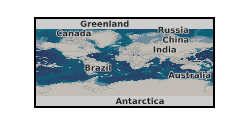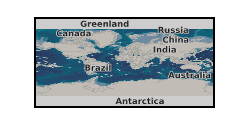.dat
Type of resources
Topics
Keywords
Contact for the resource
Provided by
Years
Formats
Representation types
Update frequencies
-

The data include the following: 1. Simulation input files (parameters used in free energy Lattice Boltzmann simulations). 2. Results from these simulations and the corresponding analysis, as presented in the manuscript "Pore scale modeling of drainage displacement patterns in association with geological sequestration of CO2". Free energy lattice Boltzmann method: A thermodynamically consistent numerical scheme to solve the hydrodynamic equations of motion, associated with two-phase flow at the pore-scale. Simulations were accelerated by using multiple general-purpose graphics processing units (GPGPUs).
-

MFIX (Multiphase Flow with Interphase eXchanges) simulation input files and raw particle output files. The study was published in Breard, E. C., Fullard, L., & Dufek, J. (2024). Rheology of granular mixtures with varying size, density, particle friction, and flow geometry. Physical Review Fluids, 9(5), 054303. Description of files 1. Input particle input file (*.dat) 2. VELOCITY* and FORCES* files exported at 10 Hz The simulation are all done as pressure-controlled shear cells where the x and z axes are periodic boundaries, and the top and bottom boundaries are solid rough plates. The simulations are split in three types: MONODISPERSE, BIDISPERSE and TRIDISPERSE, where particle size (in mm), is indicated in the naming of the directory. The, in each set of simulation, the naming is with the following structure: 20N_0.0001ms, where the first number indicates the confining pressure (20 Newtons) and the second indicate the top plate moving velocity in the x-direction (0.0001 m/s). Note the simulations were run with MFIX-18. The MFIX code that is modified from the core code from the Department of Energy (DOE) is all present. The missing core code can be downloaded from the DOE department https://mfix.netl.doe.gov/.
-

This dataset includes numerical simulation data of bottom heated convection in a rotating spherical shell. These numerical models are used to investigate the dynamics of convection in planetary cores. The simulations are performed over a range of thermal forcing and rotation rate [1-3] to study the various dynamical regimes of rotating convection. The dataset includes the simulation states to reproduce the simulations, time-series output of relevant variables from the simulations apart from post-processed diagnostic quantities. Due to large volume of the simulation state files only the initial, final and time averaged files are stored in the dataset in NETCDF format. The simulation diagnostics are provided in text, which includes time series, spatial and temporal averages of various diagnostic quantities (e.g. kinetic energy of convection) and forces to assess the underlying dynamics and heat transfer behaviour. The simulations have been performed using the Leeds Spherical Dynamo code [4], using ARC2, ARC3 and ARC4 HPC system in University of Leeds and the ARCHER and ARCHER2 HPC system. Refs: [1] https://doi.org/10.1017/jfm.2017.539 [2] https://doi.org/10.1017/jfm.2020.67 [3] https://doi.org/10.48550/arXiv.2410.03369 [4] https://github.com/Leeds-Spherical-Dynamo/leeds-spherical-dynamo
-

This dataset contains the acquired distributed acoustic sensing (DAS) and hydrophone datasets from a project investigating the usage DAS at the UK Geoenergy Observatory (UKGEOS) research facility in Glasgow, funded by the UK Unconventional Hydrocarbons (UKUH) small project grant. The UKGEOS site in Glasgow has repurposed an abandoned coal mine to investigate its potential as a heat source and heat sink, and its borehole infrastructure includes pre-installed fibre-optic cables. DAS is a novel seismic monitoring technique that utilizes fibre-optic cables to measure small acoustic and seismic vibrations. Comparable to a very densely spaced hydrophone or geophone array, DAS provides unparalleled data resolution and insights into the subsurface. This dataset provides both active source and passive measurements of DAS at the UKGEOS Site 2 prior to the heat pump installation, providing geophysical baseline measurements of the mine. Alongside the acquired DAS data, data from a hydrophone array co-located to the fibre-optic cable was collected during the active source survey to provide a means of comparison to the DAS. NERC and ESRC jointly funded Unconventional Hydrocarbons in the UK Energy System Programme grant - Baseline seismic monitoring survey for UKGEOS Glasgow geothermal production using Distributed Acoustic Sensing (DAS)
-

Herein lies the supporting data for the paper 'Small-scale capillary heterogeneity linked to rapid plume migration during CO2 storage'. We supply experimental, analytical and numerical simulation data used in the paper. The supplied zipped folders follow the same order as the main paper, with codes to reproduce each figure (and those in the supporting information PDF). There are also video files (in the 5_Field_scale_simulation zipped folder) showing the final CO2 plume evolution from the static images in the main paper Figure 4. Descriptions of each of the folders are given below: 0 - README. This contains detailed instructions on the data and using the supplied files. 1 - Scaling analysis. This contains the scaling analysis analytical methods, with figure generation for Figure 1 in the main paper. 2 - Petrophysics. This contains all the petrophysical experimental data, analysis files and core flood simulation files. This is used to produce Figure 2 in the main paper. 3 - Fine_resolution_simulations. This contains the simulation files, Matlab post processing files and figure generation for the fine resolution simulations, presented in Figure 3 in the main paper. 4 - MIP_upscaling. This contains simulations files, Matlab post processing files and figure generation for the macroscopic invasion percolation scheme. The results of this are presented in the supporting information document. 5 - Field_scale_simulation. This contains the simulations files, Matlab post processing files and figure generation for the final field scale simulations in the main manuscript Figure 4 and in the supporting information. In each folder are separate READMEs containing specific information relevant for the included files.
 NERC Data Catalogue Service
NERC Data Catalogue Service